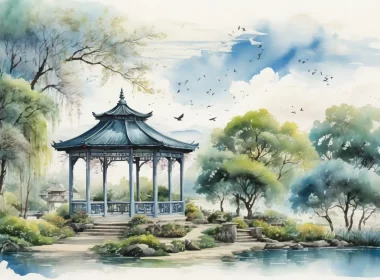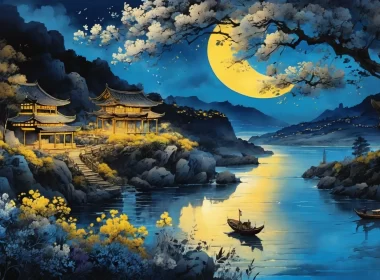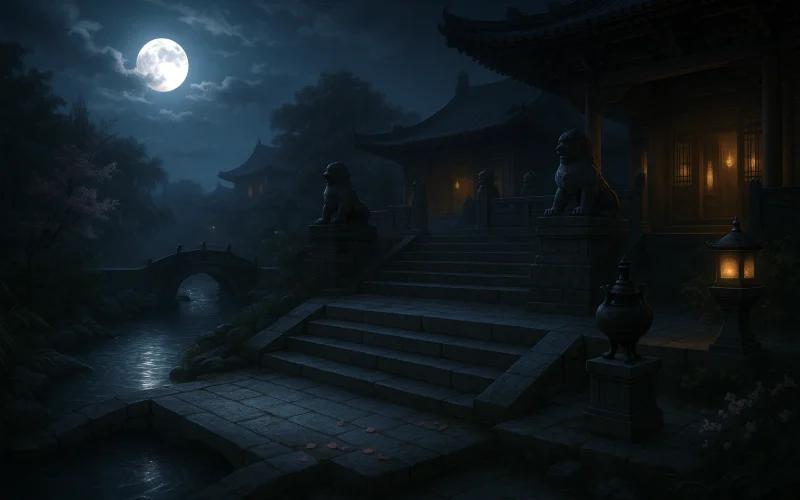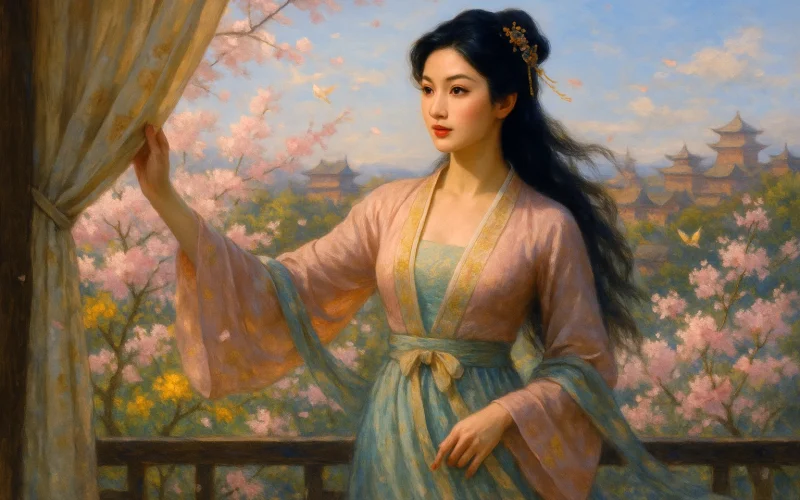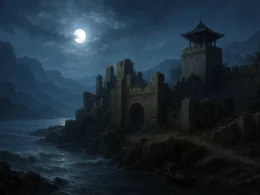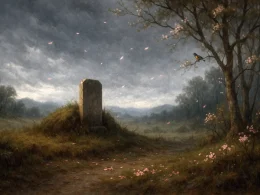Floating clouds part to unveil the moon bright,
Her liquid light drips on jade steps in shade.
Though shared by souls a thousand miles apart,
Who knows the heartache night after night made?
Original Poem
「夜夜曲」
欧阳修
浮云吐明月,流影玉阶阴。
千里虽共照,安知夜夜心?
Interpretation
This enigmatic quatrain, undated in Ouyang Xiu's corpus, exemplifies his mastery of compressed lyricism. Likely composed during political exile or emotional isolation, it employs the classic moon motif to project unattainable longing—a hallmark of Song wanyue aesthetics where celestial imagery mirrors human fragility.
Opening Couplet: "浮云吐明月,流影玉阶阴。"
Fú yún tǔ míng yuè, liú yǐng yù jiē yīn.
Drifting clouds part to exhale the moon—
Its liquid shadow pools
On jade steps' cool maroon.
The visceral verb "exhale" (吐) animates the clouds' lunar revelation, while "liquid shadow" (流影) transforms moonlight into a palpable substance. The jade steps (玉阶), traditional symbols of imperial inaccessibility, here become receptacles of borrowed luminescence—their cold minerality contrasting with the moon's ephemeral glow.
Closing Couplet: "千里虽共照,安知夜夜心?"
Qiān lǐ suī gòng zhào, ān zhī yè yè xīn?
Though shared across a thousand miles,
Can its light fathom
Night-after-night's
Unconsoled phantom?
The rhetorical question dismantles the cliché of "shared moonlight." The temporal repetition "night-after-night" (夜夜) exposes the moon's cruel paradox: its cyclical returns only measure human despair's linear accumulation. The "unconsoled phantom" (心) suggests emotions so persistent they've acquired independent haunting agency.
Holistic Appreciation
Though merely twenty characters long, this poem unfolds a profound artistic conception and intense emotion. The first two lines depict scenery, while the latter two express sentiment, forming a structure of "introduction—development—transition—conclusion." The opening couplet sets the scene, creating an atmosphere of nocturnal stillness and moonlit solitude; the following lines then erupt with emotion, transforming the seemingly serene night into a vessel for longing and anguish. Though the moonlight shines brightly, it cannot illuminate the sorrow within—the poet crafts a striking contrast between "shared illumination" and "unknowable depths," poignantly conveying the alienation and loneliness of the human heart with remarkable emotional power.
Artistic Merits
This poem employs a "scene-infused emotion, emotion-bred meaning" technique, achieving a simplicity of form with profound depth. Its distinctive features include:
- The moon as a deftly wielded symbol, transforming nature into an emotional metaphor.
- A rhetorical question ("How could one know its nightly heart?") that heightens lyrical tension, subtly conveying inner desolation.
- Condensed language and rhythmic precision, epitomizing the five-character quatrain’s brevity and lingering resonance.
- A fusion of scene and sentiment, quietly contemplating the barriers of time, space, and human connection—infused with philosophical insight.
Insights
By juxtaposing the moonlit night with the unseen turmoil of the heart, this poem reveals a timeless truth: though we share the same world, our hearts often remain worlds apart. Through the moon’s silent witness, the poet elevates personal solitude into a universal emotional experience, prompting reflection on how rare true mutual understanding can be.
It reminds us: Expression and empathy matter far more than superficial proximity; only when hearts commune do we truly "share the light" of the same moon.
About the Poet
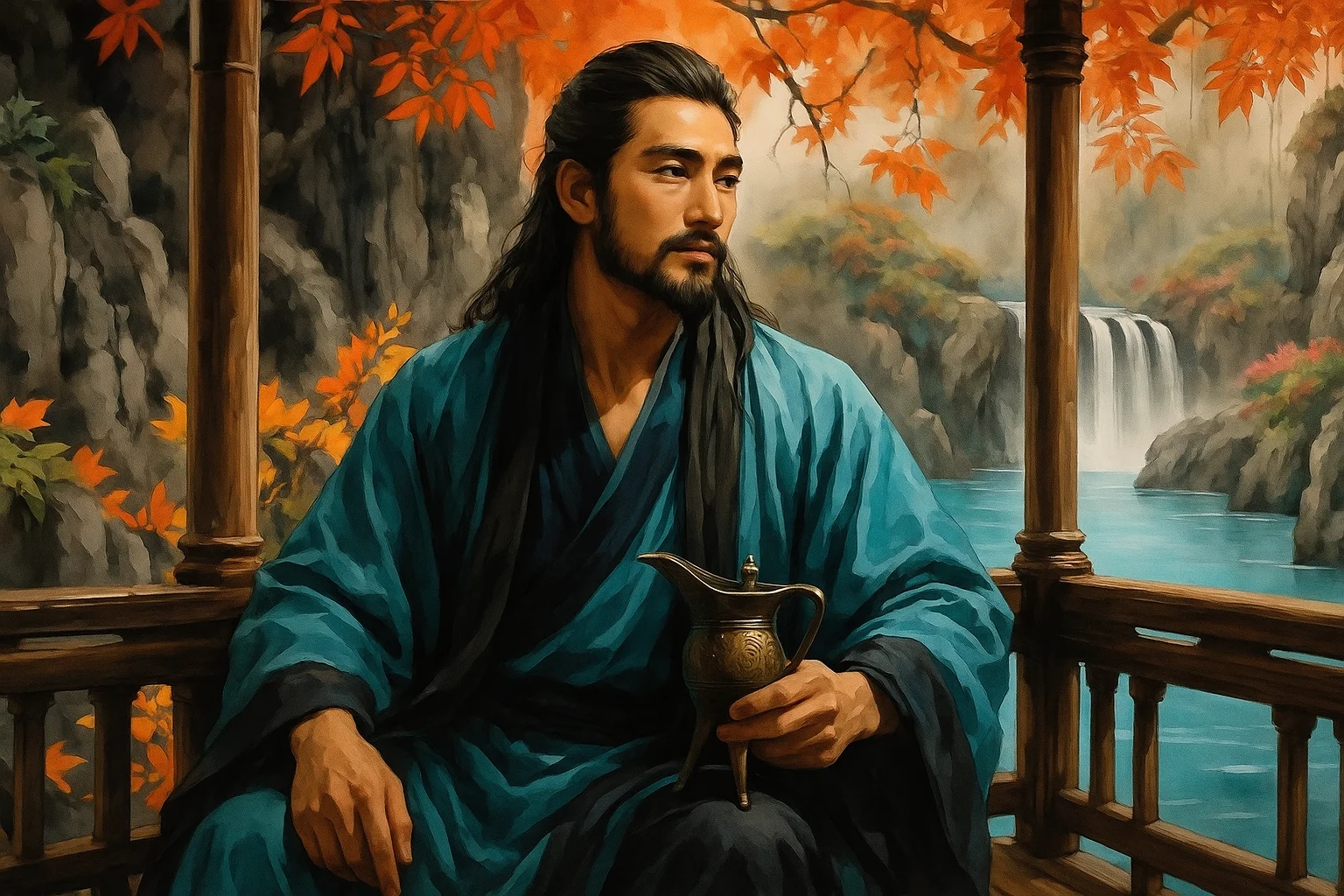
Ouyang Xiu (欧阳修, 1007 - 1072), a native of Yongfeng, Jizhou (present-day Jiangxi Province), emerged as the preeminent literary figure of the Northern Song Dynasty. After attaining the jinshi degree in 1030, he spearheaded a literary reform movement that rejected the ornate Xikun style prevalent at court. As a mentor who nurtured literary giants like Su Shi and Zeng Gong, he laid the foundation for the golden age of Northern Song literature. Recognized as one of the "Eight Great Prose Masters of Tang and Song," Ouyang stands as the pivotal figure in the transformation of Northern Song literary culture.




